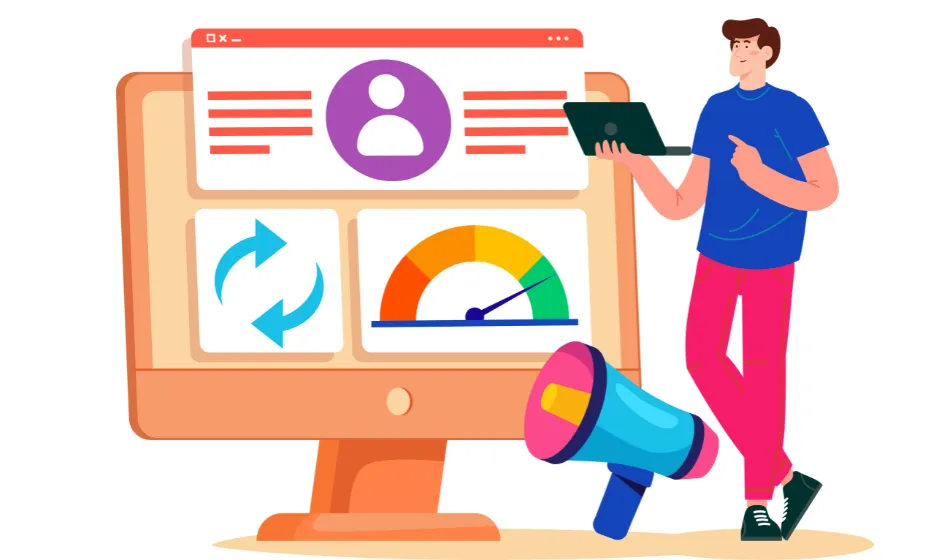The Impact of User Experience (UX) on Website Development

When it comes to website development, user experience (UX) is very important in the modern world. Simply, it is no longer acceptable for a website to be attractive in terms of its style, layout and colours; a website must also be functionally usable.
Applying proper UX knowledge and experience can change the way the user perceives a particular site, thus increasing interaction, sales and client satisfaction.
In this blog, I will explain the impact of user experience on website development and why it is important for ultimate success.
Why User Experience Matters in Web Development?
User experience, generally known as UX consideration, has emerged as an important aspect in determining the success of websites. It is more about providing value and entertainment to its users to keep them coming back for more. Regardless of whether one is using pages to complete a task or move from one page to another, the impression that users have about your brand can be affected by the quality of the UX.

Enhancing User Satisfaction
In simple terms, UX is more concerned with the effectiveness, usability, and feel of a website or any site that users come across. Benefit realization guarantees that the users are happy with what they get out of visiting your website and that they will trust your business more. When implemented effectively, website design Dubai ensures that your site meets these user expectations seamlessly.
Driving Conversions and Business Goals
A clear graphic design of the website allows the visitor to navigate around the site, encouraging him or her to take a specific action, including making a purchase, signing up for a newsletter or contacting the business. Ux design is proven to have a direct impact on whether the goals that have been set for your website will be met.
Core Elements of User Experience in Website Development
Here are the elements of user experience that help in the design and development of effective web solutions that meet user’s expectations as well as the organization’s business objectives.
1. User-Centered Design
All the work carried out in website development must always be centred on the end user. Carrying out research on the audience makes it easier to meet their expected standards and use patterns with the website. It also ensures that the created website is functional and has genuine usefulness to the people who are going to use it.
2. Navigation and Structure
A successful design ensures that users are not confused about any content they are searching for within your website. The clarity in the menus, easy navigation paths, and least number of clicks enhance the browser experience. Prospective users, therefore, feel more comfortable with your site because they can find what they are looking for easily, which allows them to interact with other facets of your site more willingly.
3. Visual Appeal and Content Readability
Effectiveness is ubiquitous, but beauty matters as well. Interesting graphics with short and simple text that present the information allow users to stay engaged longer. Typography, and clever use of colours, as well as space, help the reader to skim through the content with greater ease.
4. Loading Speed and Performance
It only takes a few seconds for a Web visitor to become impatient and leave the site no matter how attractive and utilitarian it may be. A good UX design also involves the ability to make pages load faster and have a problem-free amplitude. Each second is critical – new users may leave, and potential customers – disappear.
Real-Life Case Study: Airbnb’s UX Overhaul
Business giants from Airbnb are the perfect examples of how prioritization of the UX can be beneficial for any company. Airbnb was able to transform its site into one of the most frictionless offerings in the hospitality market by zeroing in on the existing user pain.
Key Improvements Implemented:
- Simplified Booking Process: Airbnb simplified it for its clients by cutting down on the number of steps to be followed in the process of making a reservation. This reduced delay and effectively eliminated interface friction when it came to the user booking process.
- Enhanced Search Filters: They brought specifics, where users could filter for exactly the kind of home that they wanted in terms of price, features and more. I also like that sponsored links have become personalized, meaning the platform has become more appealing and efficient.
- Mobile Optimization: Being aware of the rising significance of mobile devices, Airbnb adapted the website for increased usability on smaller devices. This made the users have the same experience on the desktop and the mobile phones.
Results:
- Increase in Engagement: An easy-to-use interface translated into higher customer retention and satisfaction.
- Revenue Growth: By developing UX, Airbnb recorded an improvement in the number of bookings and ultimately increased its revenues significantly.
- Brand Loyalty: The smooth journey made one-time customers to become multiple buyers ,which was a plus for Airbnb in expanding its global market.
This paper demonstrates that with UX at the helm of the stage, corporate growth and customer bonding have a clear correlation.
How UX Impacts Website Development
User experience affects all aspects of designing any website, from the conceptualization process to the site’s deployment phase. The approach to integration is also informed by such factors as UX, as it seeks to guarantee that the final result effectively and adequately satisfies the needs of both the end-users and business stakeholders.
Improves Design Choices
Designers have to follow UX principles during the development of a website and generally in the phase of planning and coding. This involves adapting to the use of mobile device adaptation techniques, such as, the use of feedback loops in enhancing the interface. The design accommodations are improvements that make the item useful to people while also being aesthetically pleasing.
Reduces Bounce Rates
Sometimes, websites created with a bad UX end up having high bounce rates where users run off the website. A simple design of the website ensures that the visitors are held longer on the website and are less likely to bounce off the website. It also means that lower bounce rates will help with the SEO ranking as well as the appearance of the site to search engines.
Strengthens Brand Identity
Uniform UX design makes the website more credible and trustworthy. If the customer has a positive experience with the product or service, the positive emotions are tied to the product, hence, creating consumer experience and customer loyalty. Brand consistency applies to competitive advantage, where businesses develop a unique image in their respective markets.
Integrating UX into Website Development
It must be integrated into the development process to help it run smoothly and achieve sustainable success. With the application of the essential concepts of user-oriented development, a website can be built to be optimally beneficial both to the business owner and the Web site users.

Conduct Usability Testing
Testing also helps to identify the website’s responsiveness based on the practical use scenarios on different devices. Collect the opinion of each member of the team to make alterations effectively. So, testing comes in handy as it reveals discrepancies that the site developer could be blind to or that the site does not meet the user’s expectations.
Focus on Accessibility
In a good UX design, special consideration is given to disabled users. Elements such as the option to use a screen reader for the contents of the website, the text description of pictures, the availability of keyboard control accelerate the process. Accessibility provides for a wider population of your website’s user base to engage with your website without difficulty.
Continuous Updates
Customer expectations change from time to time. The general idea is to ensure that your website’s existing design and features remain fresh and helpful. Consumers can always come through the site and get new experiences, which will make them come again and again.
Conclusion
Usability is one of the main concepts of contemporary web design. Maintaining simplicity, usability, and accessibility, therefore, provides the key to the construction of websites that capture and hold the interest of the business.
A web design company in Dubai can help enterprises to integrate these principles effectively. The case of Airbnb shows an example of how changes in UX have a positive impact that shows quantitative results, including financial results. Consequently, in the harsh climate of today’s Internet, the users’ experience can no longer be considered as a value add but a requirement.
FAQs
1. What is UX in website development?
In the context of website development, UX, or user experience, is the primary idea of a user’s experience of a site. It incorporates attributes such as readability, layout, navigation and accessibility thus, the site is user-friendly.
2. Why is UX important for website development?
UX is important as it determines the satisfaction, usage and loyalty of users. Good UX has benefits such as conversion rate improvement, low bounce rate and high brand credibility.
3. How can I improve UX on my website?
Ways of enhancing UX include keeping a user-centred perspective, loading your website as fast as possible, making it easy to locate things on your site, and constantly trying to find problems so that you can solve them.




